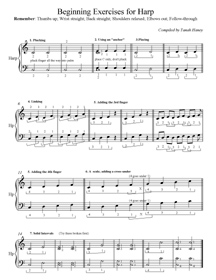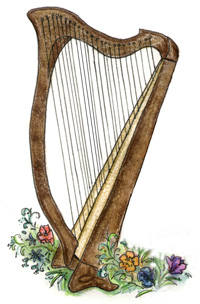My students are so cool. Every day I’m reminded of how each and every one of my students are amazing in some way.
Having taught some of my younger students for several years in a row now, I’m really getting to see them grow up. When I asked one of my returning students what extracurricular activities she was doing this year, she said ballet and curling. Is that great or what? Not exactly two activities you usually hear said in the same breath. I’m so glad kids these days don’t have the same restrictions and stigmas associated with certain activities that they used to. Girls and boys equally have a lot more freedom to choose to do whatever they want, without being unfairly judged or ridiculed as a result.
I know that there are some problems with some kids being over-saturated with activities, and stressed out by all the expectations that have been laid on them by the grownups (and other kids) around them. But that doesn’t seem to be a problem with any of my students. Almost all of them come to each lesson with a really positive attitude; they may get easily distracted sometimes, sure, or show up tired or distracted for some reason or another. But that almost always disappears as soon as we dive into the lesson.
I sometimes wonder how any teacher could rigidly try to force each student to conform to the exact same style of learning and the exact same hand position. Every single one of my students is so different; they’re all different shapes and sizes, all different ways that they learn best. We always start with a basic solid technique foundation, of course, but there are so many ways it can be modified to fit each student, without losing the main goal: having a practical and efficient way of getting around on the harp, so you can focus on creating great music without being hampered by bad habits.
But back to my students… Besides harp lessons, they’re all doing a wide variety of cool things. One of them is involved in community theatre, one of them sings in a choir; and it’s not just the kids; most of my adult students have families and full time jobs to juggle on top of everything else. It’s impossible to have a “favourite” student. All of them have their own unique approach to things, and their own way of making teaching enjoyable.
One young girl seems to have fallen in love with the harp at first sight, and is always really cheerful and enthusiastic. She even gave my harp a name – her own special name for my harp. I didn’t tell her that I already have my own name for the harp – I figure harps are kind of like cats; they can have many different names. After all, every student relates to the harp in their own way.
Another one of my students is what some might call a model student; she’s incredibly bright, quick, always really positive and polite (and I don’t mean in that scary, unnatural way that kids can be polite, like it’s something they’ve been forced to do, but completely genuine). She always practices, and seems to really enjoy the whole learning process. She’s one of those people who has the potential to be anything at all that she wants to be.
With my adult students this year, we’re dealing a lot with health issues and a tendency to really build up and retain tension, so there’s been a really strong focus on the ergonomics of harp technique. We’re doing a lot of deep breathing, and finding as many ways as we can of releasing tension. It almost feels like sometimes I’m taking on the role of a phsyical therapist! One of my students practices Tai Chi and Yoga, something we share, and we’re finding ways to incorporate the terminology and philosophy behind those practices into harp playing.
All in all, I have to say that teaching music gives back as much as it takes. It can be hard work, sometimes, but it’s so worth it. So here’s a shout out to all the music students out there, doing their best to struggle through despite all the potential setbacks and frustrations they may encounter. We don’t just teach you; we learn from you too. And whenever I feel like I’m not doing all the things I want to do, or that I’m not contributing enough to the world, I think about those moments when a student breaks into a smile when something finally clicks; when one of my younger students actually clap their hands in joy after finally playing through a whole song all by themselves. Thanks, guys. You make it worth it.

 I thought it would be fun to periodically feature weird harps, or things that get mistaken for harps (or things with “harp” in the name that have no resemblance to harps as we know them). It’s also an easy thing to do when I’m totally bushed from gigging all day and my brain cells are functioning at minimal capacity.
I thought it would be fun to periodically feature weird harps, or things that get mistaken for harps (or things with “harp” in the name that have no resemblance to harps as we know them). It’s also an easy thing to do when I’m totally bushed from gigging all day and my brain cells are functioning at minimal capacity.
